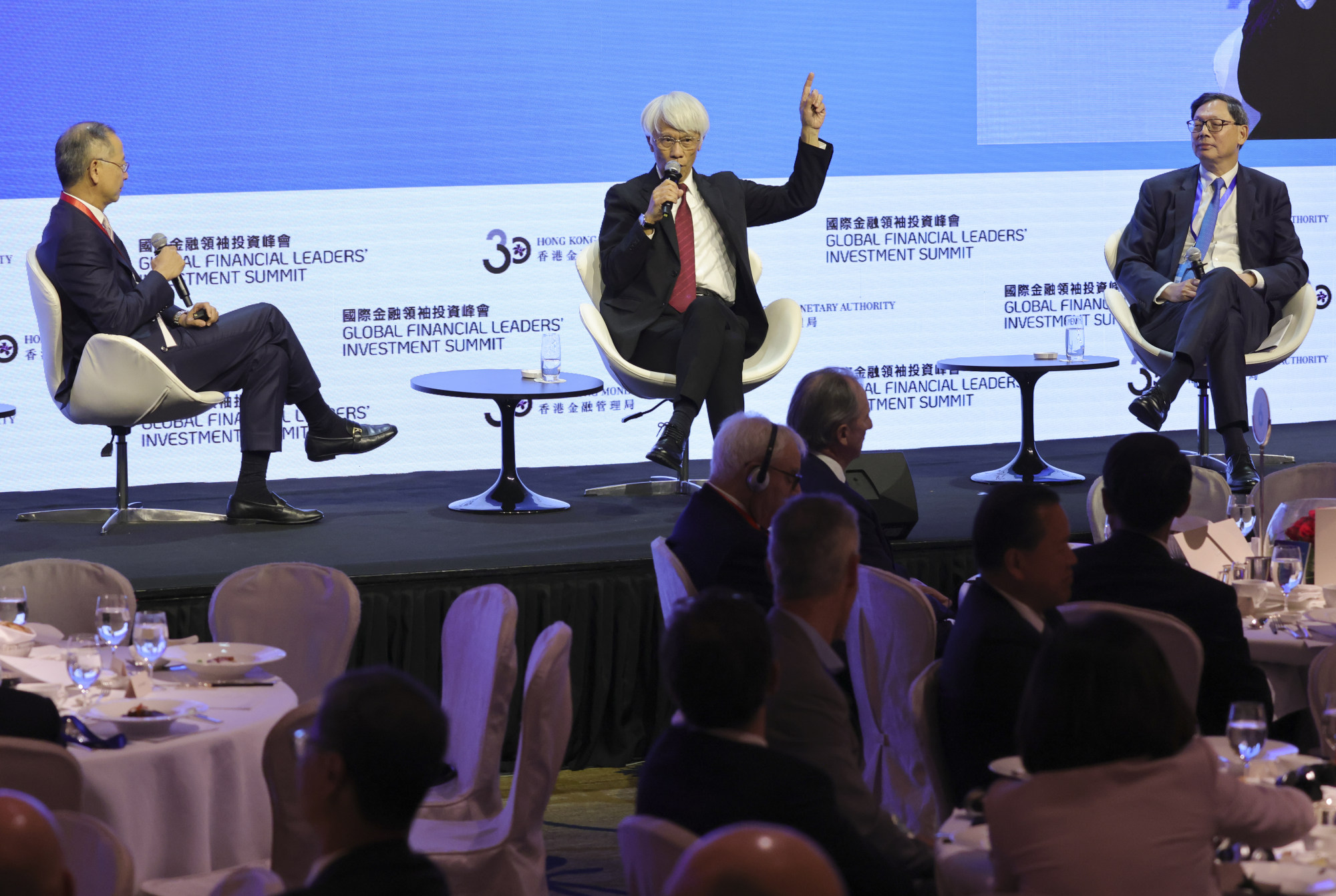Regulators and bankers have called for broader capital flow between Hong Kong and the rest of China’s Greater Bay Area to enhance the special administrative region’s role as a bridge and gateway, as well as to advance the region’s economy.
“I think we should take a bolder step in building a special bridge between Hong Kong and the Greater Bay Area,” Norman Chan Tak-lam, the former CEO of Hong Kong Monetary Authority (HKMA), said at the Global Financial Leaders’ Investment Summit on Tuesday. “Because the Greater Bay Area is big, we can afford to have some pilots to see how it goes.”
Chan, who retired in October 2019, pushed for “freer movement of capital” within the bay area using blockchain, adding that the technology could be used to test its impact on capital raising and other cross-border economic activities.
He was speaking at a fireside chat with Eddie Yue Wai-man, the current HKMA CEO, and Joseph Yam Chi-kwong, the first head of Hong Kong’s de facto central bank.

The emphasis on greater capital flow was echoed by Noel Quinn, group chief executive of HSBC.
“We’ve been expanding into the Greater Bay Area with corporate and commercial banking for quite some time, so we certainly treat that as a huge opportunity for growth,” Quinn said, adding that capital flow from the mainland to Hong Kong had grown by three to four times this year.
Hong Kong a key link between mainland China, rest of the world: vice-premier He
Hong Kong a key link between mainland China, rest of the world: vice-premier He
Neil Shen, the founding partner of venture capital firm HongShan, formerly known as Sequoia China, said Hong Kong and the rest of the bay area should also strengthen their ties in technology and innovation.
Companies from the mainland can provide capital to support Hong Kong’s young tech entrepreneurs and university talent, especially in areas such as medical and biotechnology, he said.
The sentiment was echoed by top officials from mainland China, who pledged support to help the city tap its unique status as a financial hub and as the mainland’s link to the world.
Hong Kong ideally placed to become region’s leading green finance hub
Hong Kong ideally placed to become region’s leading green finance hub
Wang Jianjun, vice-chairman at China Securities Regulatory Commission, said the regulator will “go all out” to support Hong Kong’s capital market and continue developing the city as a hub for initial public offerings and expand connect schemes for cross-border stock trading.
“We will make it easier for mainland enterprises to come to list in Hong Kong,” Wang said in his speech on Tuesday.
In his opening address at the summit, Hong Kong Chief Executive John Lee Ka-chiu said the city will continue to deepen economic and financial ties with the mainland and the Greater Bay Area.
“We are at the centre of the world stage, creating opportunities for a world of business, finance, and investment,” Lee said.
The Hong Kong government has been taking steps in that direction. In his policy address last month, Lee said that the government would start issuing multiple-entry visas to foreigners working in Hong Kong to make it easier for them to visit the mainland, in a bid to attract more companies to set up in the city.
The Greater Bay Area comprises nine cities in China’s southern Guangdong province and the special administrative regions of Hong Kong and Macau.
The bay area, with a population of more than 86 million and a gross domestic product in excess of 13 trillion yuan (US$1.8 trillion) as of 2022, accounts for over 10 per cent of China’s economic output. The region is a core part of China’s economic blueprint, with Beijing planning to turn the region into an economic powerhouse by 2035 that will surpass the economies of Tokyo Bay, the New York Metro Area, and the San Francisco Bay Area.
The State Council, China’s cabinet, released the outline development plan for the Greater Bay Area in February 2019. The plan highlighted four main areas of policy support: technology and innovation, consolidating and enhancing Hong Kong’s status as an international financial and trade hub, attracting overseas talent and capital into the bay area, and strengthening the region’s infrastructure connectivity.
Additional reporting by Jiaxing Li


